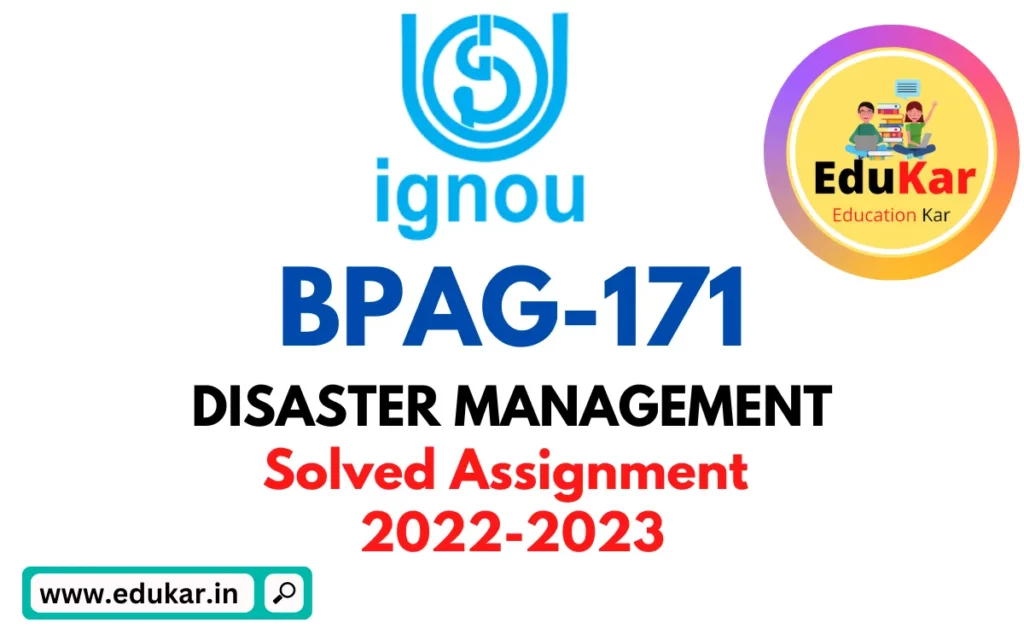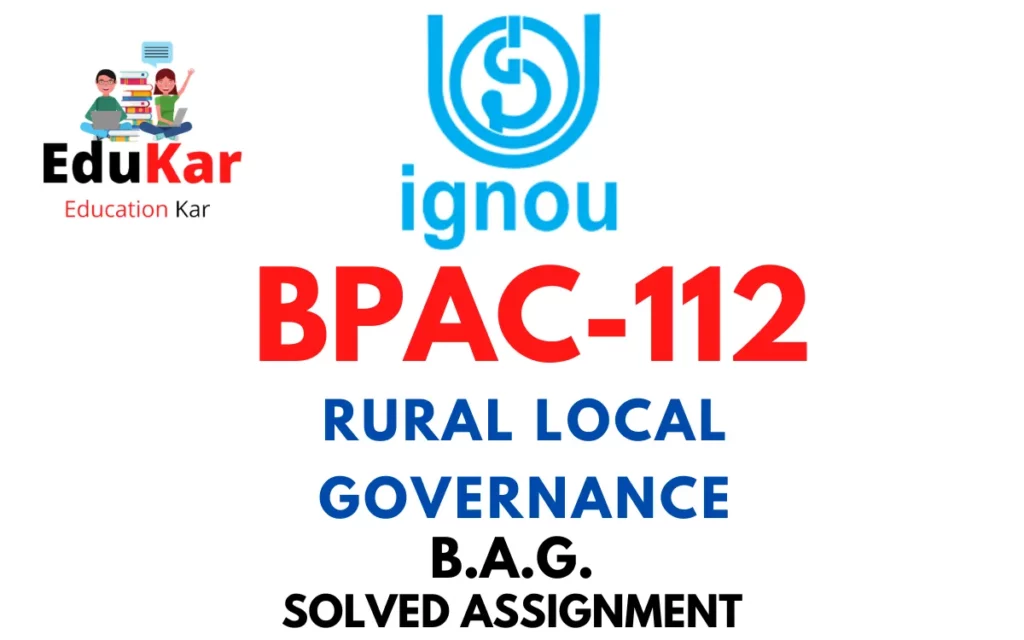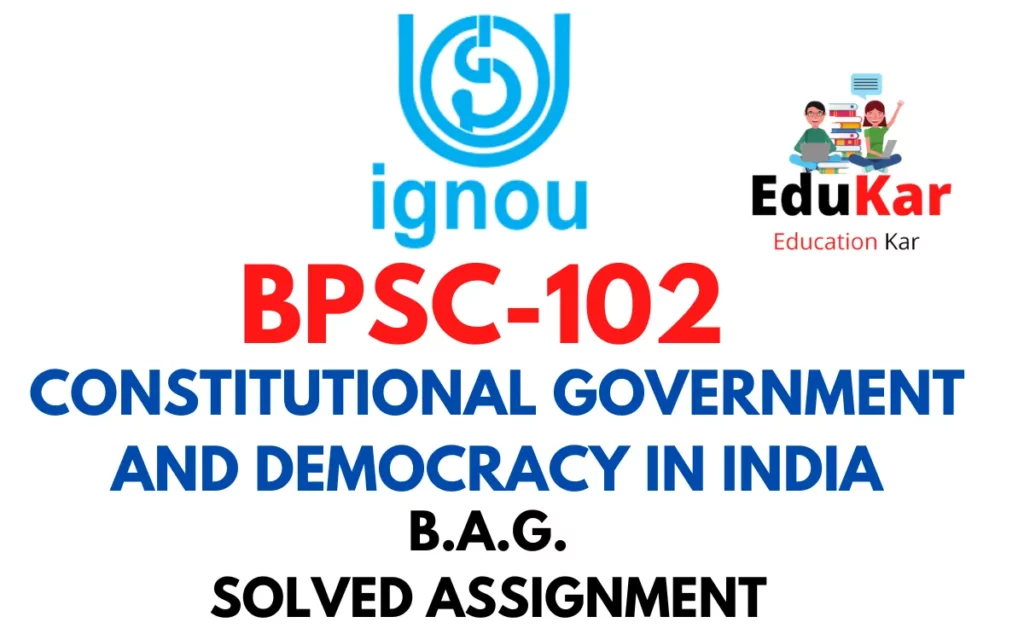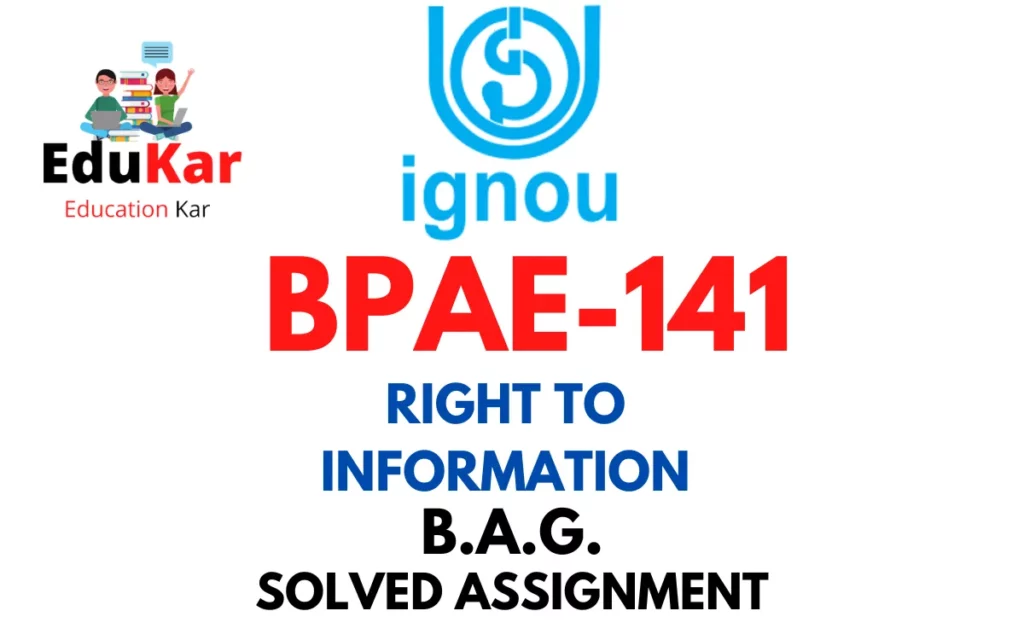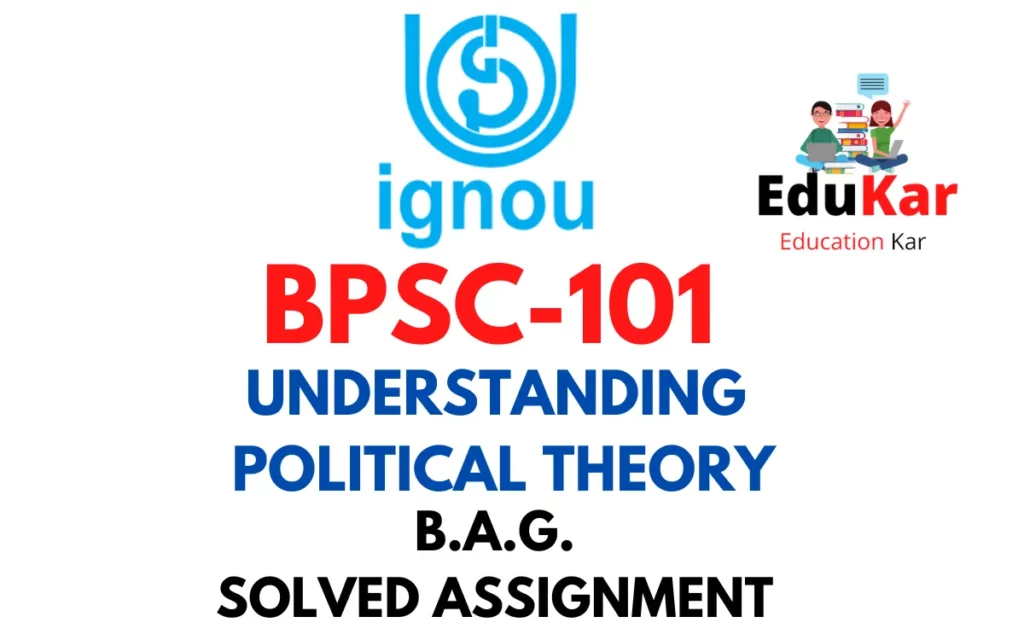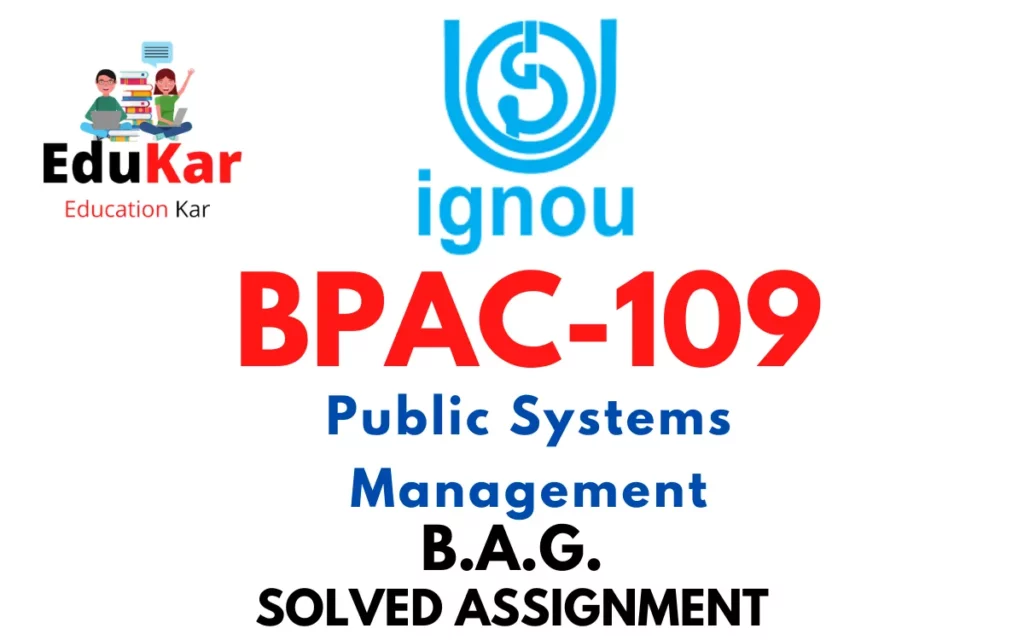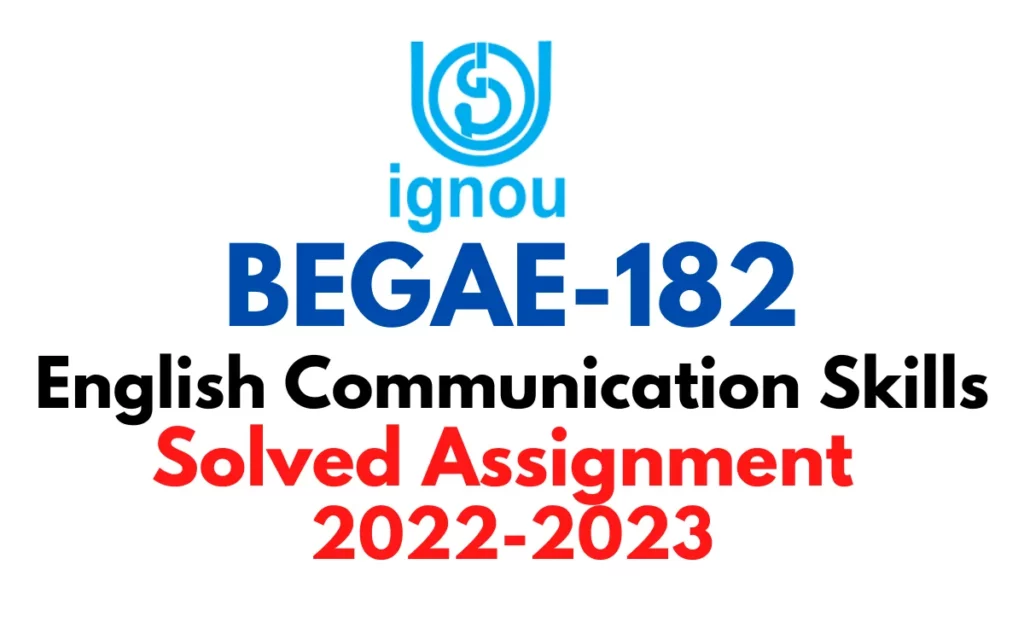Contents
- 1 Assignment A
- 2 Answer the following questions in about 500 words each.
- 3 1. What are various fundamental rights given to citizens in India in the Constitution of India? Which among these facilitates ensuring the right to education and how?
- 4 2. What do you mean by Total Quality Management (TQM)? Suggest the ways to ensure TQM in higher educational institutions.
- 5 Assignment-B
- 6 Answers the following questions in about 250 words each.
- 7 3. How has the recommendations of the National Knowledge Commission (NKC) helped in shaping the new structure of higher education in India? Explain critically.
- 8 4. Critically examine and compare the role and functions of CBSE and your state board of examination.
- 9 5. Explain various types of higher education institutions in India?
- 10 6. Discuss the factors contributing to the growth of private participation in education?
- 11 Assignment-C
- 12 Answer the following questions in about 125 words each.
- 13 7. Discuss the role and functions of District Institutes of Education and Training (DIETs).
- 14 8. What are the objectives of the National Skill Qualification Framework (NSQF)? Discuss.
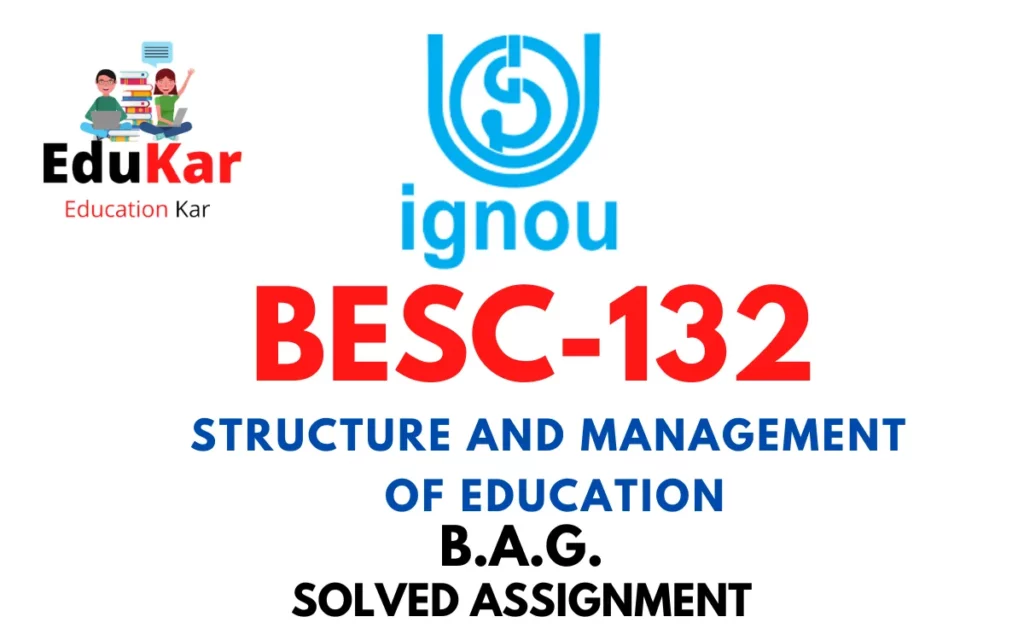
| Title | BESC-132: IGNOU BAG Solved Assignment 2022-2023 |
| University | IGNOU |
| Degree | Bachelor Degree Programme |
| Course Code | BESC-132 |
| Course Name | STRUCTURE AND MANAGEMENT OF EDUCATION |
| Programme Name | Bachelor of Arts (General) |
| Programme Code | BAG |
| Total Marks | 100 |
| Year | 2022-2023 |
| Language | English |
| Assignment Code | BESC-132 /TMA /July 2022 and January 2023 |
| Assignment PDF | Click Here |
| Last Date for Submission of Assignment: | For June Examination: 31st April For December Examination: 30th September |
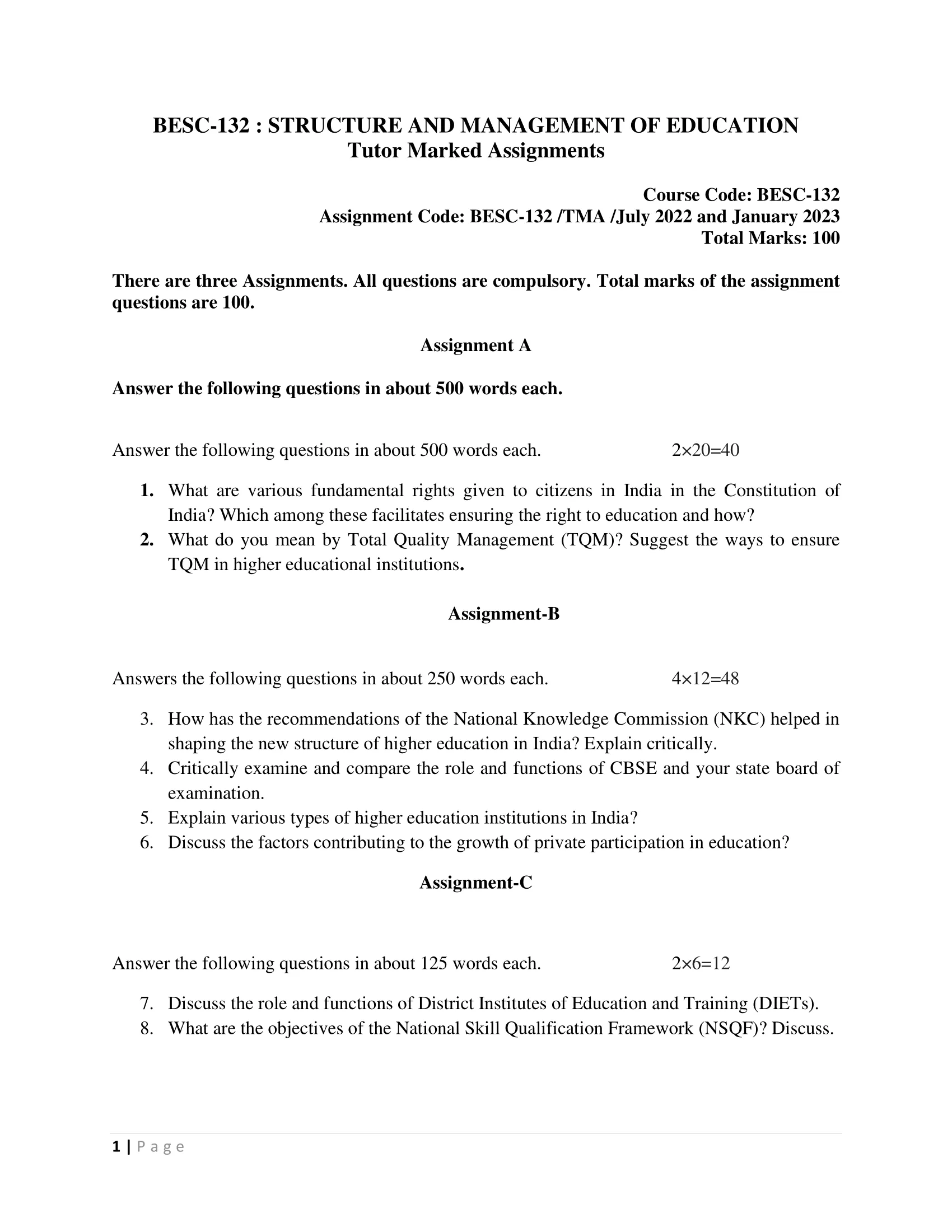
Assignment A
Answer the following questions in about 500 words each.
1. What are various fundamental rights given to citizens in India in the Constitution of India? Which among these facilitates ensuring the right to education and how?
Ans: The Constitution of India provides its citizens with various fundamental rights, which are enshrined in Part III of the Constitution. Some of the fundamental rights are:
- Right to Equality: This includes the right to equality before the law, the prohibition of discrimination on grounds of religion, race, caste, sex, or place of birth, and the right to equal opportunity in matters of public employment.
- Right to Freedom: This includes the right to freedom of speech and expression, the right to assemble peacefully and without arms, the right to form associations or unions, the right to move freely throughout the territory of India, and the right to practice any profession or to carry on any occupation, trade or business.
- Right against Exploitation: This includes the prohibition of traffic in human beings and forced labor, and the prohibition of child labor.
- Right to Freedom of Religion: This includes the freedom of conscience and the right to freely profess, practice, and propagate any religion.
- Cultural and Educational Rights: This includes the right of any section of citizens to conserve their culture, language, or script, and the right of minorities to establish and administer educational institutions of their choice.
- Right to Constitutional Remedies: This includes the right to move the Supreme Court or the High Courts for the enforcement of fundamental rights.
The Right to Education is a fundamental right in India, which is ensured through the Right of Children to Free and Compulsory Education Act (RTE), 2009. This Act makes education a fundamental right for children between the ages of 6 to 14 years and mandates that every child has the right to free and compulsory education in a neighborhood school till the completion of elementary education. The Act also lays down norms and standards for the quality of education and facilities that schools must provide. Any violation of the right to education under this Act can be challenged in court under the Right to Constitutional Remedies.
2. What do you mean by Total Quality Management (TQM)? Suggest the ways to ensure TQM in higher educational institutions.
Ans: Total Quality Management (TQM) is a management philosophy that aims to continuously improve the quality of products, services, and processes by involving all members of an organization in a systematic approach. The goal is to exceed customer expectations by producing high-quality products or services that meet or exceed their needs.
In the context of higher educational institutions, TQM can be applied to ensure that the institution meets the needs and expectations of its stakeholders, including students, faculty, staff, and the wider community. Here are some ways to ensure TQM in higher educational institutions:
- Define and communicate clear goals and objectives: The institution should have a clear understanding of its mission, vision, and objectives, and communicate them effectively to all stakeholders.
- Create a culture of continuous improvement: This involves encouraging and empowering all members of the institution to identify and solve problems and continuously improve processes and services.
- Involve all stakeholders in decision-making: This means involving students, faculty, staff, and other stakeholders in decision-making processes to ensure that everyone’s needs and expectations are considered.
- Train and develop staff: This involves providing regular training and development opportunities to staff to enhance their skills and knowledge.
- Use data-driven decision-making: The institution should collect and analyze data to make informed decisions and identify areas for improvement.
- Focus on customer satisfaction: The institution should prioritize the needs and expectations of its customers, including students and other stakeholders.
- Monitor and measure performance: This involves regularly monitoring and measuring performance against established goals and objectives.
By implementing these practices, higher educational institutions can ensure TQM and continuously improve the quality of their services and processes.
Assignment-B
Answers the following questions in about 250 words each.
3. How has the recommendations of the National Knowledge Commission (NKC) helped in shaping the new structure of higher education in India? Explain critically.
Ans: The National Knowledge Commission (NKC) was established in 2005 by the Indian government with the aim of transforming higher education in India. It submitted a series of reports to the government with recommendations for improving the quality and accessibility of higher education in the country. These recommendations have been influential in shaping the new structure of higher education in India.
One of the key recommendations of the NKC was the need to increase the number of institutions of higher education in the country, especially in under-served areas. As a result, the government has set up several new universities and colleges, and has encouraged the establishment of private institutions as well. This has led to an increase in the number of students enrolled in higher education in India, which is a positive outcome.
The NKC also emphasized the importance of research and innovation in higher education, and recommended that universities and colleges focus on these areas. The government has taken steps to promote research and innovation in higher education by providing funding for research, setting up research centers, and establishing centers of excellence in various fields. This has led to an increase in the number of research publications and patents filed from India, which is a positive outcome.
4. Critically examine and compare the role and functions of CBSE and your state board of examination.
Ans: CBSE (Central Board of Secondary Education) and State Boards of Examination are two of the major education boards in India. While CBSE is a national-level board, each state in India has its own State Board of Examination. In this answer, I will critically examine and compare the role and functions of CBSE and State Boards of Examination.
- Curriculum: CBSE follows a uniform curriculum across the country while State Boards have the flexibility to design their own curriculum. The CBSE curriculum is designed to be comprehensive and provide students with a broad perspective on various subjects, while State Boards can customize the curriculum based on the specific needs and requirements of the state.
- Examination: Both CBSE and State Boards conduct annual board examinations for Class X and Class XII students. The CBSE examination pattern is standardized across the country, while State Boards have the flexibility to design their own examination patterns. State Boards may also conduct state-level common entrance tests for admission to professional courses.
- Syllabus: CBSE prescribes syllabus for its affiliated schools and its syllabus is recognized by many higher education institutions in India and abroad. However, state boards prescribe their own syllabus and the recognition of their syllabus varies across institutions.
- Affiliation: CBSE provides affiliation to schools across the country, while State Boards provide affiliation to schools within their respective states. CBSE-affiliated schools follow the CBSE curriculum and examination pattern, while state board-affiliated schools follow the curriculum and examination pattern prescribed by the respective state board.
- Standardization: CBSE has a centralized approach to education, which ensures standardization across schools, while State Boards do not have a uniform approach to education, which may result in inconsistencies in the quality of education across schools.
5. Explain various types of higher education institutions in India?
Ans: In India, there are various types of higher education institutions that offer a wide range of programs and courses. Here are some of the most common types of higher education institutions in India:
- Universities: These are the largest and most diverse higher education institutions in India. They offer undergraduate and postgraduate programs in a wide range of subjects and fields, such as science, technology, arts, humanities, management, and law. There are both public and private universities in India.
- Colleges: These are smaller institutions that offer undergraduate courses in specific disciplines, such as engineering, medicine, commerce, or arts. Colleges can be standalone institutions or affiliated with universities. Many colleges also offer postgraduate courses in their respective fields.
- Institutes of National Importance (INIs): These are prestigious institutions that have been designated as such by the Indian government due to their excellence in teaching and research. Examples of INIs include the Indian Institutes of Technology (IITs), the Indian Institutes of Management (IIMs), and the All India Institutes of Medical Sciences (AIIMS).
- Autonomous colleges: These are colleges that have been granted autonomy by the University Grants Commission (UGC) and can design their own curricula, evaluate students, and award degrees. Autonomous colleges have greater flexibility in academic matters and can respond more quickly to changing needs and demands.
- Deemed universities: These are institutions that have been granted the status of “deemed to be universities” by the UGC or the Ministry of Human Resource Development (MHRD) due to their expertise in a particular field or discipline. Deemed universities have the authority to design their own curricula and award degrees.
- Open universities: These are distance education institutions that offer programs through online and offline modes of delivery. They provide greater flexibility for students who cannot attend traditional classes due to work or personal commitments. Examples of open universities in India include Indira Gandhi National Open University (IGNOU) and Sikkim Manipal University.
- Vocational institutions: These are institutions that offer programs and courses in vocational and technical fields, such as engineering, nursing, and hospitality. They are designed to provide students with the skills and knowledge necessary to enter the workforce in a particular industry.
6. Discuss the factors contributing to the growth of private participation in education?
Ans: Private participation in education has been on the rise in recent years. Here are some factors contributing to this growth:
- Demand for Quality Education: One of the main reasons for the growth of private participation in education is the demand for quality education. Private institutions are often perceived as offering better quality education than public institutions, and parents are willing to pay higher fees for this.
- Government Policies: Changes in government policies have also contributed to the growth of private participation in education. The government has encouraged private investment in education through policies that provide subsidies, tax benefits, and other incentives.
- Increase in Disposable Income: The growth in private participation in education is also linked to the increase in disposable income of the middle class. As people’s incomes rise, they are willing to spend more on education, and private institutions are able to tap into this market.
- Globalization: The growth of private participation in education is also linked to globalization. As the world becomes more interconnected, there is an increasing demand for education that is recognized internationally. Private institutions are often better equipped to provide this type of education.
- Technological Advancements: Technology has made it easier for private institutions to reach a wider audience. Online education and e-learning have made it possible for private institutions to provide education to students who are unable to attend traditional classes.
- Lack of Sufficient Public Education: In many countries, there is a lack of sufficient public education, especially in rural areas. Private institutions have stepped in to fill this gap, providing education to students who would otherwise have limited access to education.
Assignment-C
Answer the following questions in about 125 words each.
7. Discuss the role and functions of District Institutes of Education and Training (DIETs).
Ans: District Institutes of Education and Training (DIETs) were established by the Indian government as a part of the National Policy on Education (NPE) in 1986. They play a key role in the professional development of teachers, the improvement of the quality of school education, and the promotion of community involvement in education.
The functions of DIETs include providing pre-service and in-service training to teachers, conducting action research and evaluation studies, developing curriculum and teaching-learning materials, promoting innovations in education, and supporting the implementation of national and state-level education policies. They also provide academic support to elementary schools, organize community-based education programs, and work towards the inclusion of marginalized groups and children with special needs in education.
8. What are the objectives of the National Skill Qualification Framework (NSQF)? Discuss.
Ans: The National Skill Qualification Framework (NSQF) is a competency-based framework that aims to align the skills of the Indian workforce with the needs of industry and the economy. The objectives of the NSQF are as follows:
- To create a unified system of skill-based education and training that is recognized and valued by employers, workers, and educational institutions.
- To establish clear learning pathways and progression routes for individuals to acquire skills and qualifications that are relevant and appropriate to their career aspirations.
- To develop a culture of lifelong learning and continuous skill upgradation, which will enable individuals to remain employable and contribute to the growth of the economy.
- To ensure that the quality of education and training is of a high standard and is responsive to the changing needs of the industry and the market.
- To promote standardization, quality assurance, and accreditation of skill-based education and training programs.
- To facilitate the recognition of prior learning and the transfer of credits across different educational institutions and vocational training providers.
How to Download BESC-132 Solved Assignment?
You can download it from the www.edukar.in, they have a big database for all the IGNOU solved assignments.
Is the BESC-132 Solved Assignment Free?
Yes this is absolutely free to download the solved assignment from www.edukar.in
What is the last submission date for BESC-132 Solved Assignment?
For June Examination: 31st April, For December Examination: 30th October





